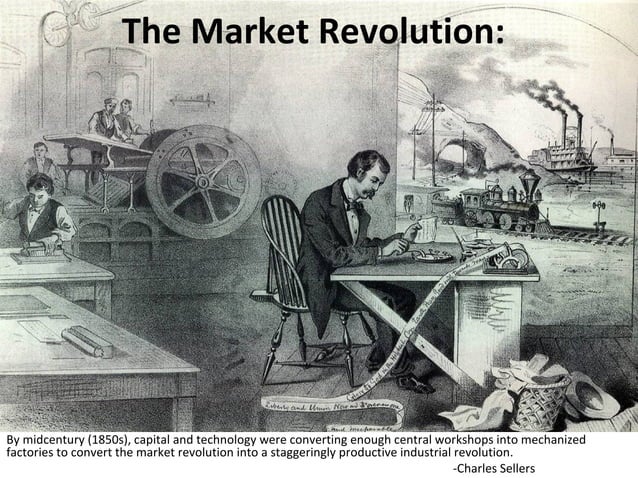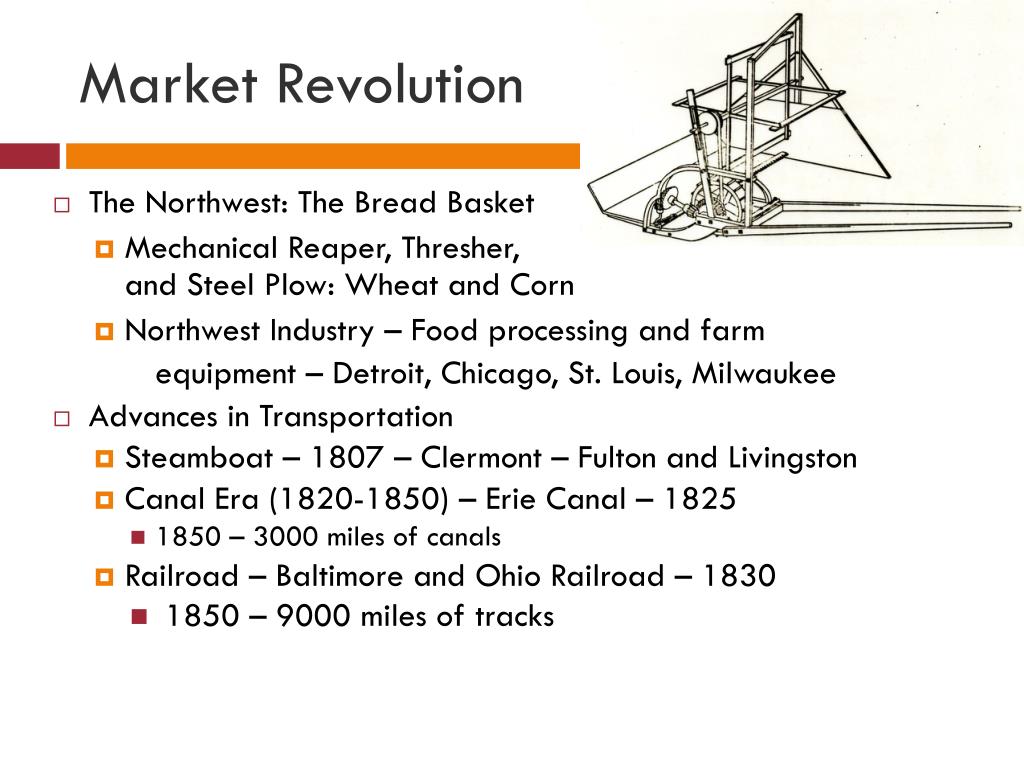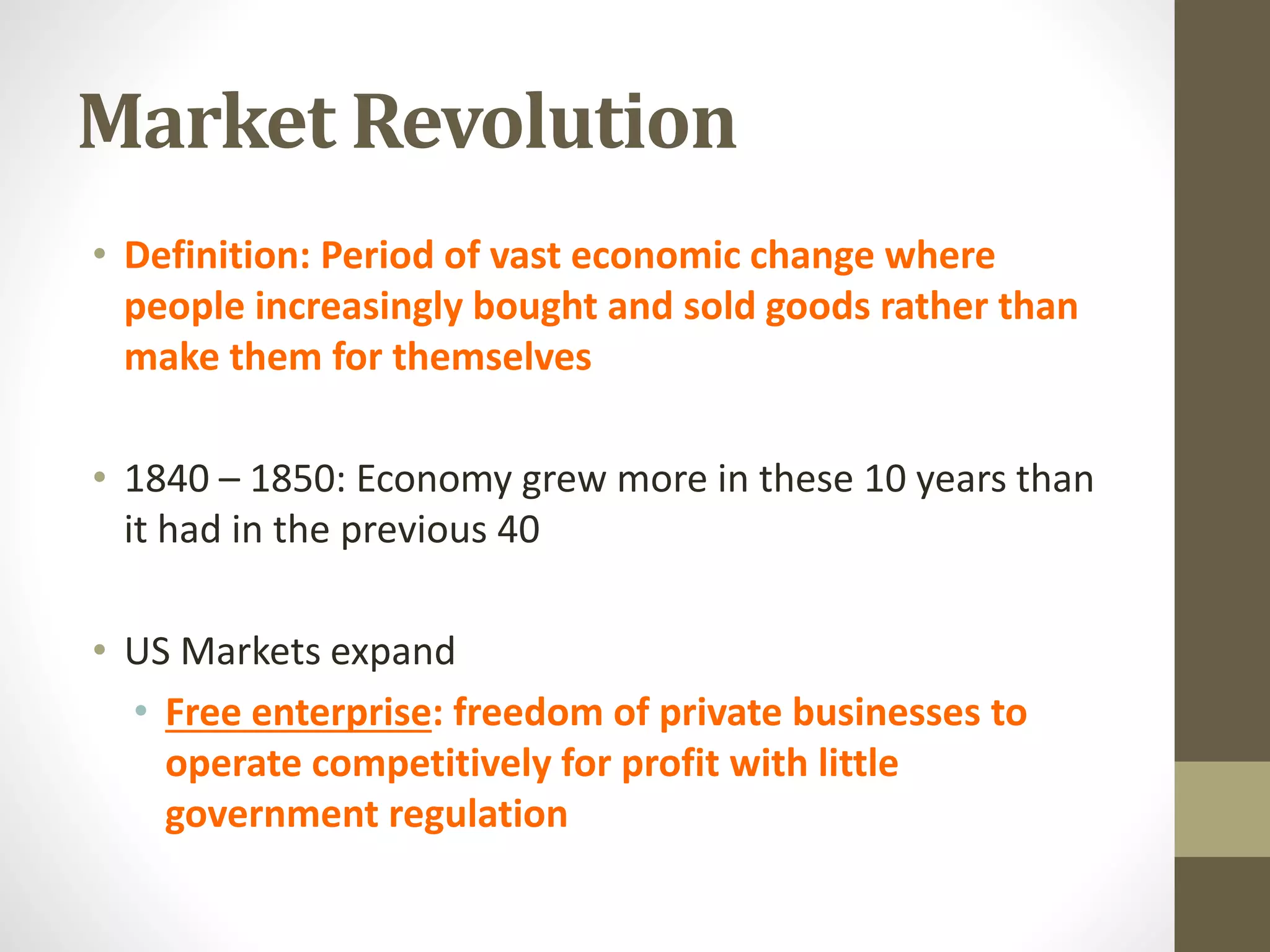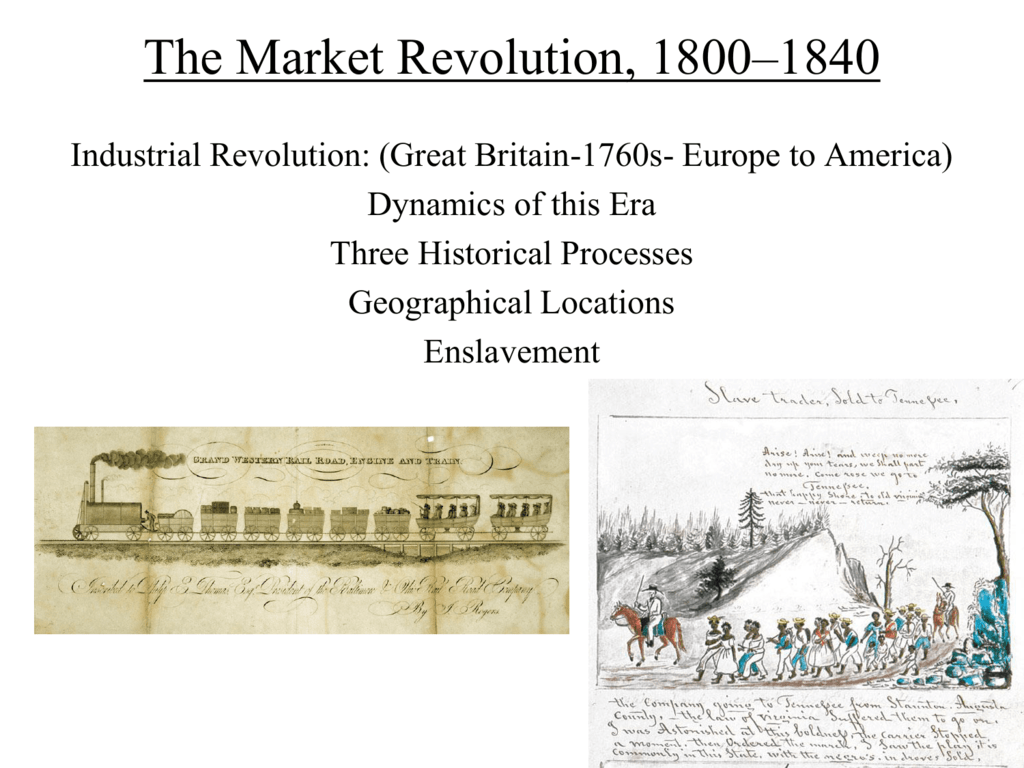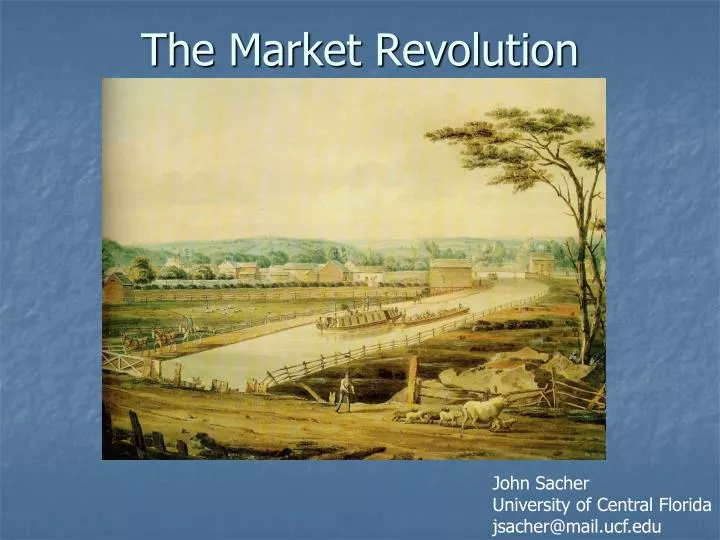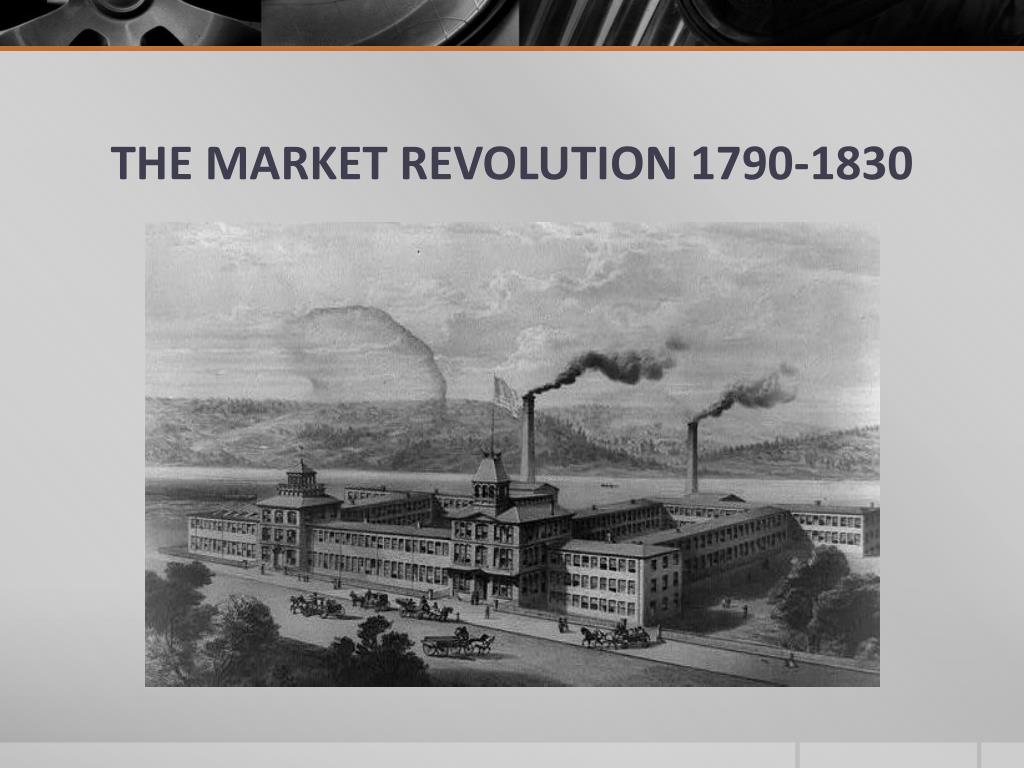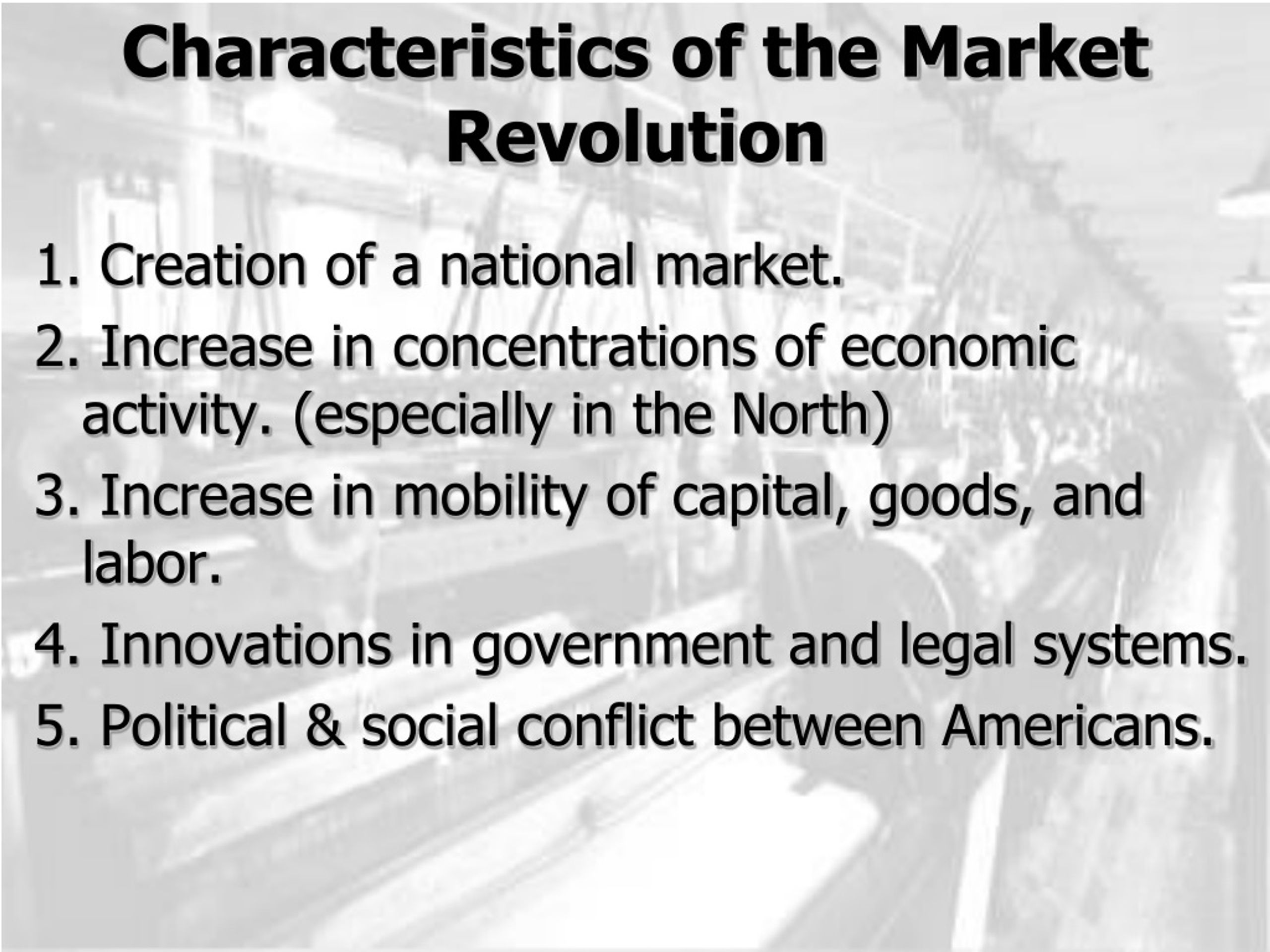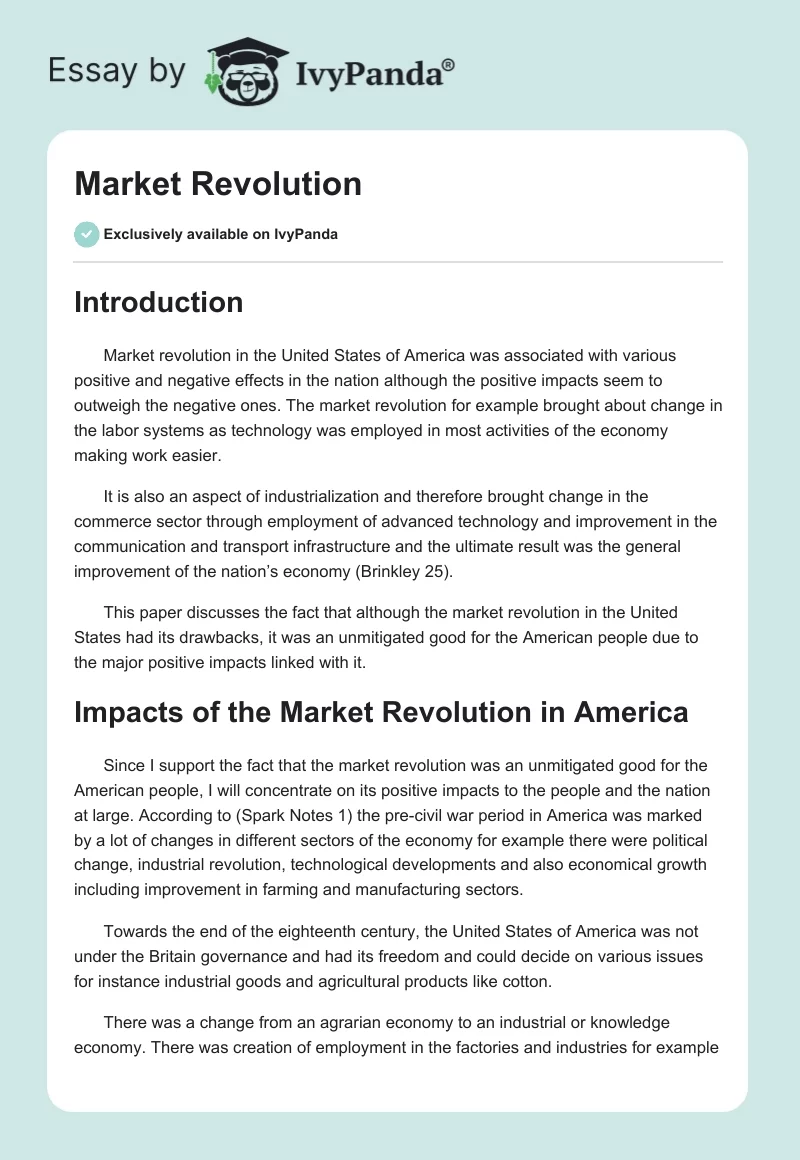Identify The Statements That Describe The Market Revolution.

The Market Revolution, a transformative period in American history from the late 18th century to the mid-19th century, fundamentally reshaped the nation’s economy, society, and culture. Its ripple effects continue to influence the United States today, impacting everything from labor practices to consumerism. Understanding the core tenets of this revolution is crucial to grasping the trajectory of American development.
This article aims to dissect the key statements that accurately describe the Market Revolution, relying on historical data and expert analysis. We will examine the shift from localized economies to a national market, the rise of industrialization and technological innovation, the changing nature of labor, and the social and political consequences of these changes. This in-depth exploration will offer a clear and nuanced understanding of this pivotal era.
The Rise of a National Market
One defining characteristic of the Market Revolution was the transition from localized, subsistence economies to a interconnected national market. Previously, most Americans were largely self-sufficient, producing goods for their own consumption or for small-scale local trade. The Market Revolution spurred increased trade and a shift towards producing goods for distant consumers.
The development of new transportation infrastructure was central to this transformation. The construction of canals, such as the Erie Canal, and the expansion of railroads dramatically reduced transportation costs and time. This allowed goods to be shipped more efficiently across greater distances, connecting different regions and fostering inter-regional trade.
According to economic historian Walter Licht, "The Market Revolution brought about an unprecedented integration of the American economy." This integration fostered specialization, with different regions focusing on the production of goods for which they had a comparative advantage. Southern states specialized in cotton production, while the Northeast emerged as a manufacturing hub.
Industrialization and Technological Innovation
The Market Revolution witnessed the beginnings of industrialization in the United States, fueled by technological innovation. New machines and factories began to replace traditional artisan workshops. This shift led to mass production, increased efficiency, and lower production costs for many goods.
Inventions like the cotton gin, invented by Eli Whitney, revolutionized agricultural production. The cotton gin dramatically increased the efficiency of cotton processing, fueling the expansion of cotton plantations in the South and increasing the demand for slave labor. Similarly, innovations in textile manufacturing, such as the power loom, transformed the textile industry.
David A. Hounshell, in his study of American technology, emphasized that the Market Revolution was marked by "a relentless pursuit of efficiency and standardization." This pursuit led to the development of new management techniques and organizational structures within factories.
The Changing Nature of Labor
The Market Revolution fundamentally altered the nature of work for many Americans. Previously, most people worked on farms or in small workshops, often as independent artisans. With the rise of factories, workers increasingly became wage laborers, employed in large-scale industrial settings.
This shift had profound social and economic consequences. Factory workers often faced long hours, low wages, and dangerous working conditions. The rise of wage labor also led to the emergence of a distinct working class, with its own set of interests and concerns.
Sean Wilentz, in his book *Chants Democratic*, argues that the Market Revolution "created a new class consciousness among American workers." Workers began to organize and demand better working conditions and higher wages.
Social and Political Consequences
The Market Revolution had far-reaching social and political consequences. The increased wealth and economic opportunity generated by the Market Revolution contributed to the growth of cities and the expansion of the middle class. However, it also exacerbated social inequalities and created new forms of conflict.
The expansion of slavery in the South was a direct consequence of the Market Revolution. The increased demand for cotton fueled the growth of cotton plantations, which relied heavily on slave labor. This dependence on slavery created a deep divide between the North and the South, ultimately leading to the Civil War.
According to historian Charles Sellers, the Market Revolution "transformed American society, creating both unprecedented opportunities and profound inequalities." These inequalities fueled political debates and social movements aimed at addressing the challenges of the new market economy.
Key statements describing the Market Revolution include: The rise of a national market through improved transportation; the introduction of industrialization and transformative technological innovations; a shift from independent artisan work to wage labor; and the emergence of social and political tensions caused by the changing economic landscape.
Looking Ahead
The Market Revolution was a pivotal period in American history that laid the foundation for the modern economy. Its effects continue to shape American society and culture. Understanding its defining characteristics is crucial to comprehending the complexities of the American experience.
As we move forward, it is important to learn from the successes and failures of the Market Revolution. While it brought about unprecedented economic growth and opportunity, it also created significant social and economic inequalities. Addressing these inequalities remains a challenge today.
By studying the Market Revolution, we can gain valuable insights into the forces that shape our economy and society. This understanding can help us to build a more just and equitable future for all Americans. The legacy of the Market Revolution continues to resonate in the 21st century.

